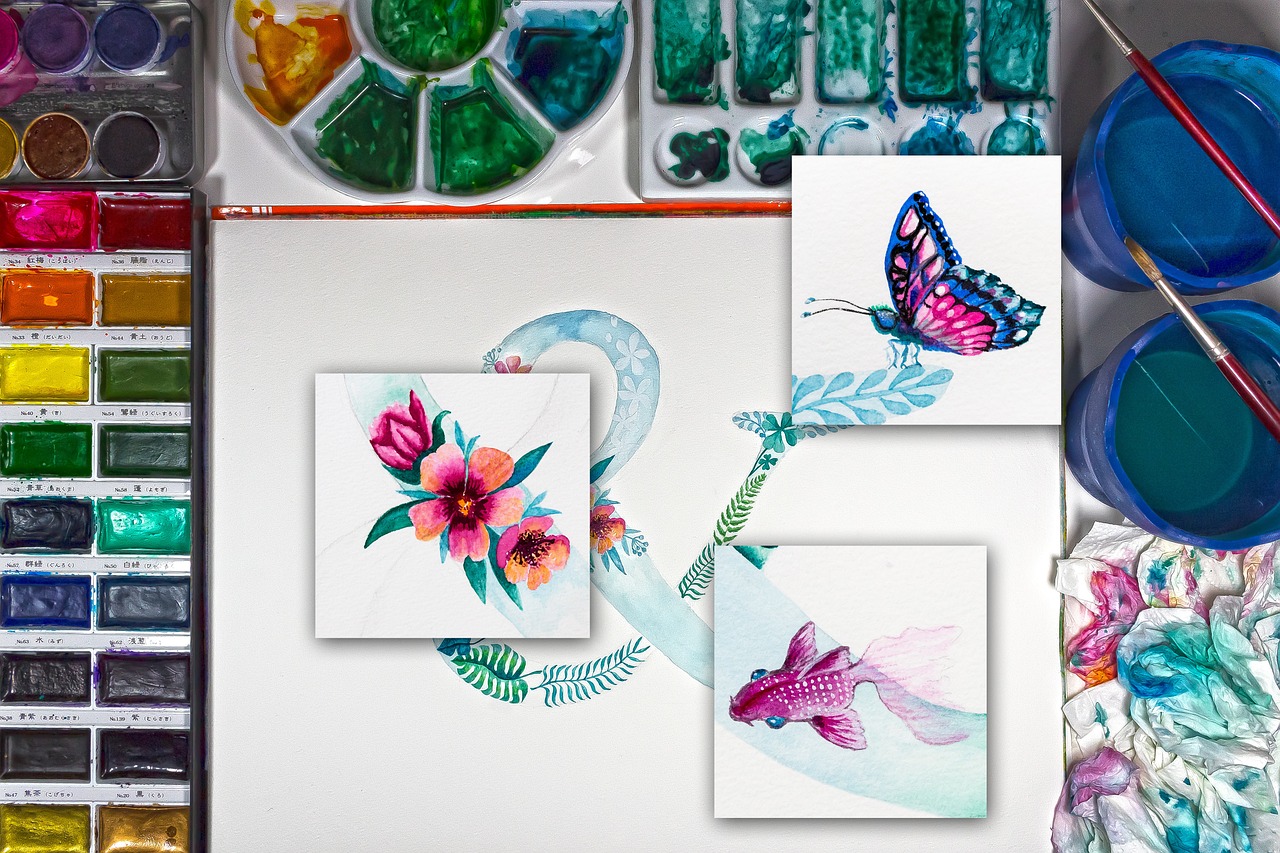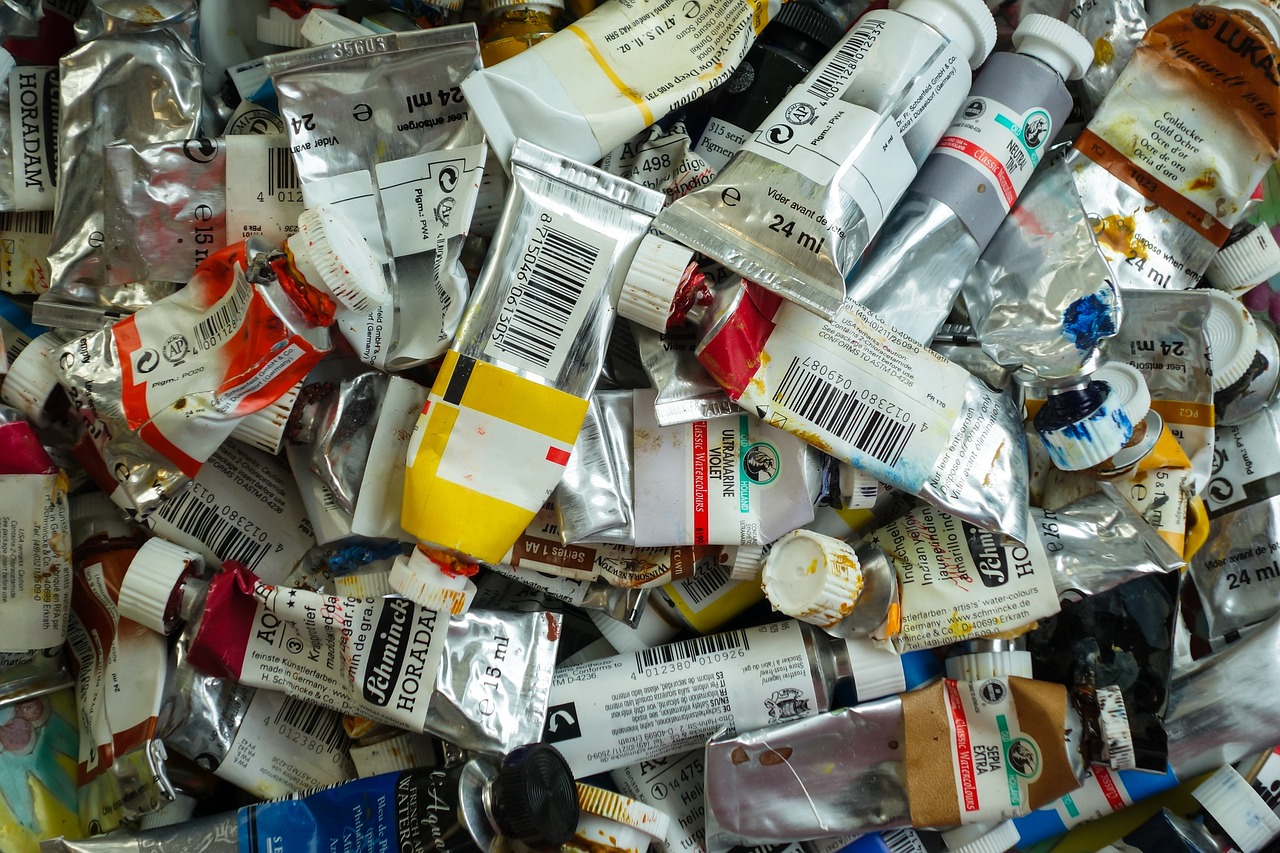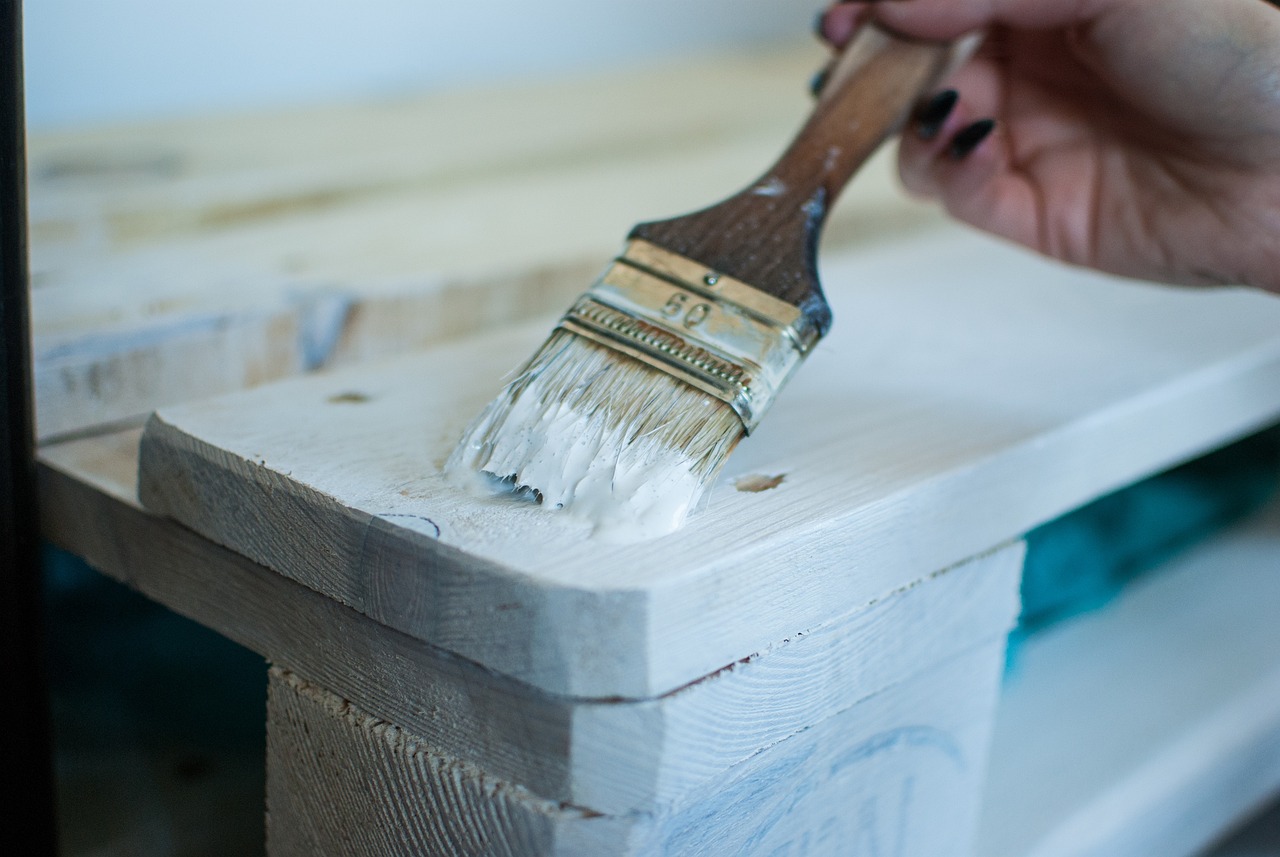Why Every Painter Should Learn to Varnish
Have you ever gazed at a painting and wondered why some seem to glow with life while others appear flat or dull? The secret often lies in a technique that’s as crucial as the brushstrokes themselves: varnishing. Varnishing is not just an afterthought; it's a vital step in the painting process that can significantly enhance the overall quality and longevity of your artwork. Imagine varnishing as the protective shield that guards your masterpiece against the ravages of time—dust, UV damage, and environmental factors. By applying a varnish, you’re not only preserving your work but also enriching its colors and adding a depth that can make your art truly pop.
So, why should every painter, whether a novice or a seasoned pro, invest time in learning how to varnish? First and foremost, varnishing creates a barrier against harmful elements. Think of it like sunscreen for your paintings. Just as you wouldn’t want to expose your skin to the sun without protection, your artwork deserves the same care. Without varnish, colors can fade, details can blur, and the vibrancy that you painstakingly created can diminish over time.
Moreover, varnishing can enhance the visual appeal of your artwork. It can bring out the richness of colors and add a stunning finish that draws viewers in. Imagine a beautiful landscape painting; without varnish, it might look lackluster, but with a glossy or satin finish, it can transform into a captivating scene that invites the viewer to step right into it. Varnishing not only protects but also amplifies the beauty of your work, making every brushstroke count.
Additionally, varnishing can help unify the surface of your painting. Different paint mediums can have varying sheens—some may be matte, while others are glossy. By applying a varnish, you can create a consistent finish that ties the entire piece together, making it look more polished and professional. This is particularly important for artists who are looking to exhibit their work or sell it, as a well-finished piece can significantly enhance its market value.
However, it’s essential to understand that varnishing is not a one-size-fits-all solution. Different types of varnishes cater to various needs and mediums, and knowing which one to use can make all the difference. For instance, oil-based varnishes offer durability and depth, while acrylic varnishes provide quick drying times and are less toxic. Understanding these differences is crucial for any painter aiming to achieve the best results.
In summary, learning to varnish is an investment in your artistry. It’s about protecting your work, enhancing its beauty, and ensuring that it stands the test of time. Whether you’re creating a cherished piece for your home or aiming to make a mark in the art world, varnishing is a skill that every painter should master. So, grab your brushes and let’s dive into the world of varnishing—it’s time to elevate your art to new heights!

The Importance of Varnishing
This article explores the importance of varnishing in painting, providing insights into techniques, benefits, and tips that can enhance the quality and longevity of artwork.
When it comes to painting, varnishing is often the unsung hero of the art world. Imagine putting your heart and soul into a masterpiece, only to have it fade and deteriorate over time due to dust, UV rays, or environmental factors. Varnishing acts as a protective shield, ensuring that your artwork remains vibrant and intact for years to come. Not only does it safeguard your creation, but it also enhances the colors and adds a beautiful depth that can make your painting truly pop.
Understanding the significance of varnishing is crucial for any painter looking to preserve their work. Think of varnish as the final touch that elevates your art from good to great. It’s like putting a cherry on top of a sundae; it just makes everything better! But why is varnishing so important? Here are a few key reasons:
- Protection: Varnish protects your artwork from dust, dirt, and moisture. It acts as a barrier against harmful elements that can cause irreversible damage.
- UV Resistance: Many varnishes contain UV filters that prevent colors from fading when exposed to sunlight. This is especially important for paintings displayed in well-lit areas.
- Aesthetic Appeal: A good varnish can enhance the vibrancy of colors and add a glossy or matte finish, depending on your preference. This can transform the overall look of your artwork.
It's not just about keeping your painting safe; it's about making it look its best. Varnishing can bring out the details that might otherwise go unnoticed. Picture a painting of a sunset. Without varnish, the colors may appear flat and dull. But with a proper coat of varnish, those oranges, pinks, and purples can shine with an intensity that draws the viewer in.
Furthermore, varnishing can help in the longevity of your artwork. In the same way that a good pair of shoes can last for years with proper care, your paintings can endure the test of time with the right varnish. It's an investment in your art that pays off in the long run, allowing you to enjoy your work for decades, or even generations.
In conclusion, varnishing is not merely an optional step in the painting process; it is a vital practice that every painter should embrace. The benefits it provides in terms of protection, aesthetics, and longevity are too significant to overlook. So, the next time you finish a piece, don’t forget to give it the love it deserves with a proper varnish!
There are various types of varnishes available, each with unique properties. Knowing the differences helps painters choose the right varnish for their specific medium and desired finish.
Oil-based varnishes offer durability and a rich finish, making them popular among artists. However, they require longer drying times and careful application to avoid yellowing over time.
Oil-based varnishes provide a strong protective layer and enhance the vibrancy of colors. They are ideal for works that require a glossy finish and long-lasting protection.
Despite their benefits, oil-based varnishes can be difficult to work with due to their slow drying times and potential odor. Proper ventilation and patience are essential during application.
Acrylic varnishes are water-based and dry quickly, making them convenient for artists. They offer a range of finishes and are less toxic, appealing to those concerned about health and safety.
Proper application techniques are vital for achieving a flawless varnish finish. Understanding brush selection, layering, and drying times can significantly impact the final result.
Choosing the right brush is crucial for varnishing. Different brushes can create varied textures and finishes, so selecting one that suits your technique is essential for a professional look.
Applying multiple thin layers of varnish can enhance protection and appearance. This technique allows for better control over the final finish and reduces the risk of drips or uneven surfaces.
Q: How often should I varnish my paintings?
A: It depends on the environment where the painting is displayed. Generally, varnishing every few years is sufficient, but inspect your artwork regularly for signs of wear.
Q: Can I varnish a painting that has already dried for a long time?
A: Yes, as long as the painting is completely dry and cured, you can apply varnish to enhance its protection and appearance.
Q: Is varnishing necessary for all types of paintings?
A: While not all paintings require varnishing, it is highly recommended for those exposed to light and environmental factors to maintain their integrity.

Types of Varnishes
When it comes to varnishing your artwork, understanding the different types of varnishes available is essential for achieving the best results. Each type of varnish has its own unique properties, making it suitable for various mediums and artistic intentions. Choosing the right varnish can significantly impact not only the appearance of your painting but also its longevity. In this section, we'll delve into the two primary categories of varnishes: oil-based and acrylic varnishes, highlighting their characteristics, advantages, and disadvantages.
Oil-based varnishes are a favorite among traditional painters for several reasons. These varnishes are known for their durability and the rich, deep finish they provide. When applied, they tend to enhance the vibrancy of colors, giving artworks a stunning visual depth that can be truly captivating. However, it's essential to note that oil-based varnishes come with their own set of challenges. They typically require longer drying times, which can be frustrating for artists eager to see their work finished. Additionally, there's a risk of yellowing over time, which can alter the artwork's original appearance.
The benefits of oil-based varnishes are numerous:
- Strong Protection: They form a robust protective layer that shields your artwork from dust, dirt, and UV damage.
- Enhanced Color: These varnishes can amplify the richness of colors, making them appear more vibrant and alive.
- Glossy Finish: Ideal for artists looking to achieve a high-gloss finish, oil-based varnishes provide a professional look.
On the flip side, oil-based varnishes present some challenges:
- Slow Drying Times: Patience is key; these varnishes can take a long time to dry completely.
- Odor: They often have a strong smell that requires proper ventilation during application.
- Application Difficulty: Careful application is necessary to avoid uneven surfaces or drips, which can detract from the final look.
Acrylic varnishes, on the other hand, are water-based and have gained popularity due to their convenience. They dry quickly, allowing artists to finish their work in a shorter timeframe. This is particularly advantageous for those who may be impatient or working on multiple pieces at once. Acrylic varnishes come in a variety of finishes, including matte, satin, and gloss, giving artists the flexibility to choose the perfect look for their artwork. Additionally, these varnishes are generally less toxic, making them a safer option for artists concerned about health and environmental impact.
In conclusion, understanding the types of varnishes available is crucial for any painter. Whether you opt for the rich, durable finish of oil-based varnishes or the quick-drying convenience of acrylics, each choice comes with its own set of benefits and challenges. The key is to select the varnish that best aligns with your artistic vision and the specific needs of your artwork.
Q: How do I know which varnish to choose for my painting?
A: Consider the medium you used, the desired finish, and how much time you have for drying. Oil-based varnishes are great for depth and durability, while acrylics are quicker and less toxic.
Q: Can I varnish my painting too soon?
A: Yes, varnishing too soon can trap moisture and lead to issues like bubbling or peeling. Always ensure your painting is completely dry before applying any varnish.
Q: How often should I re-varnish my artwork?
A: This depends on exposure to elements like sunlight and dust. Generally, it's good to check your artwork every few years and re-varnish if necessary to maintain its protective layer.

Oil-Based Varnishes
When it comes to varnishing your artwork, stand out as a popular choice among many artists. Why, you ask? Well, these varnishes are renowned for their durability and the rich, glossy finish they provide, making them ideal for pieces that require a touch of elegance and long-lasting protection. Imagine your artwork glimmering under the light, with colors that seem to leap off the canvas—this is the magic that oil-based varnishes can bring to your creations.
However, it's essential to understand that working with oil-based varnishes isn't without its challenges. One of the primary drawbacks is their long drying times. Unlike acrylic varnishes that dry quickly, oil-based options can take several hours to dry completely, which can test the patience of even the most seasoned artists. Additionally, there’s the concern of yellowing over time, which can alter the appearance of your artwork. To mitigate this, it's crucial to apply the varnish correctly and to choose high-quality products designed to resist discoloration.
Let’s break down some of the advantages and disadvantages of oil-based varnishes:
| Advantages | Disadvantages |
|---|---|
|
|
In summary, while oil-based varnishes can elevate the quality of your artwork, they require careful handling and a bit of know-how. If you’re prepared to invest the time and effort, the results can be stunning. Just remember to work in a well-ventilated area and allow each layer to dry thoroughly before applying the next. This will ensure that your finished piece not only looks fantastic but also stands the test of time.
Q: Can I use oil-based varnish over acrylic paint?
A: Yes, you can use oil-based varnish over acrylics, but ensure that the acrylic paint is fully cured first to avoid any issues with adhesion.
Q: How do I clean brushes after using oil-based varnish?
A: Use a solvent like mineral spirits to clean your brushes thoroughly after varnishing, as water will not be effective.
Q: How often should I varnish my paintings?
A: It's generally recommended to varnish your paintings every few years, depending on exposure to light and environmental conditions.

Advantages of Oil-Based Varnishes
This article explores the importance of varnishing in painting, providing insights into techniques, benefits, and tips that can enhance the quality and longevity of artwork.
Varnishing not only protects paintings from dust and UV damage but also enhances colors and adds depth. Understanding its significance is crucial for any painter looking to preserve their work.
There are various types of varnishes available, each with unique properties. Knowing the differences helps painters choose the right varnish for their specific medium and desired finish.
Oil-based varnishes offer durability and a rich finish, making them popular among artists. However, they require longer drying times and careful application to avoid yellowing over time.
One of the most compelling reasons to choose oil-based varnishes is their durability. These varnishes create a robust protective layer that can withstand the test of time, ensuring that your artwork remains vibrant and intact. They are particularly effective for pieces that will be displayed in environments where they may be exposed to varying degrees of wear and tear.
Another significant advantage is the way oil-based varnishes enhance color richness. When applied, they can bring out the depth and vibrancy of the pigments used in your artwork, making colors appear more saturated and alive. This can be especially beneficial for oil paintings, where the depth of color is a hallmark of the medium.
In addition to their protective qualities, oil-based varnishes offer a glossy finish that many artists find appealing. This sheen not only adds a professional touch to the artwork but also helps to unify the surface, creating a cohesive look across the painting. The glossy layer can also reflect light, adding an extra dimension to the visual experience.
However, the application of oil-based varnishes requires some skill and patience. Artists need to be aware of the drying times, which are longer compared to other varnish types. This can be a double-edged sword; while it allows for a more controlled application, it also means that artists must plan their work sessions accordingly. Proper ventilation is crucial during this process, as the fumes can be strong.
In summary, the advantages of oil-based varnishes include:
- Durability: Provides long-lasting protection.
- Color Enhancement: Amplifies the vibrancy of colors.
- Glossy Finish: Offers a professional look and unifies the artwork.
Despite their benefits, oil-based varnishes can be difficult to work with due to their slow drying times and potential odor. Proper ventilation and patience are essential during application.
Acrylic varnishes are water-based and dry quickly, making them convenient for artists. They offer a range of finishes and are less toxic, appealing to those concerned about health and safety.
Proper application techniques are vital for achieving a flawless varnish finish. Understanding brush selection, layering, and drying times can significantly impact the final result.
Choosing the right brush is crucial for varnishing. Different brushes can create varied textures and finishes, so selecting one that suits your technique is essential for a professional look.
Applying multiple thin layers of varnish can enhance protection and appearance. This technique allows for better control over the final finish and reduces the risk of drips or uneven surfaces.
- How long does oil-based varnish take to dry? Typically, oil-based varnishes can take anywhere from 24 to 48 hours to dry completely, depending on the environmental conditions.
- Can I apply oil-based varnish over acrylic paints? Yes, but it's essential to ensure that the acrylic paint is fully cured before applying the varnish.
- What is the best way to clean brushes after using oil-based varnish? Use a solvent like mineral spirits or turpentine to clean your brushes thoroughly.

Disadvantages of Oil-Based Varnishes
While oil-based varnishes come with a plethora of benefits, they also have their fair share of disadvantages that every painter should consider before diving in. One of the most significant drawbacks is their slow drying time. Unlike their acrylic counterparts, which can dry in a matter of minutes, oil-based varnishes can take several hours, or even days, to fully cure. This extended drying period can be frustrating, especially for artists who are eager to move on to their next project or layer additional paint.
Moreover, oil-based varnishes often emit a strong odor during application. This can be a considerable concern for artists working in enclosed spaces or those sensitive to fumes. Proper ventilation is essential, which can limit where and how you work. You might find yourself needing to open windows or use fans, which can be inconvenient and distracting.
Another point to ponder is the yellowing effect that oil-based varnishes can have over time. While they initially provide a stunning glossy finish, prolonged exposure to light can cause them to take on an unsightly yellow hue. This can alter the appearance of your artwork, especially if it features lighter colors or delicate details. Thus, it is crucial to consider the long-term implications of using oil-based varnishes on your pieces.
Lastly, the application process itself can be somewhat challenging. Achieving a smooth, even coat requires a certain level of skill and patience. If you're not careful, you might end up with drips or uneven surfaces that can detract from the overall quality of your work. Therefore, if you're just starting out or lack experience, you may find oil-based varnishes to be more trouble than they're worth.
In summary, while oil-based varnishes offer durability and a rich finish, their slow drying times, strong odors, potential for yellowing, and challenging application can pose significant disadvantages. Weighing these factors against their benefits is essential for any artist looking to make an informed choice about their varnishing options.
- What is the best way to apply oil-based varnish? It's recommended to use a high-quality brush and apply in thin, even layers to avoid drips.
- How long does oil-based varnish take to dry? Depending on the environment, it can take anywhere from 6 hours to several days to fully cure.
- Can I use oil-based varnish on acrylic paintings? Yes, but ensure that the acrylic paint is completely dry before applying the varnish.
- What should I do if my varnish turns yellow? Unfortunately, yellowing can be a permanent issue, but using a UV-resistant varnish can help prevent this.

Acrylic Varnishes
Acrylic varnishes are a fantastic choice for painters looking for a quick-drying, versatile finishing option. These water-based varnishes are not only easier to clean up, but they also emit fewer harmful fumes, making them a safer alternative for artists who prioritize health and safety in their creative spaces. Imagine being able to apply a protective layer to your artwork without worrying about the lingering smell of solvents or the need for harsh chemicals—sounds appealing, right?
One of the standout features of acrylic varnishes is their fast drying time. Unlike oil-based varnishes that can take days to cure, acrylics can dry to the touch in a matter of minutes. This means you can apply multiple coats in a single day, allowing you to complete your work more efficiently. However, it's essential to note that while they dry quickly, you should still allow each layer to cure properly to achieve the best results.
Acrylic varnishes come in a variety of finishes, including glossy, matte, and satiny. This range allows artists to choose a finish that complements their artwork perfectly. For instance, if you want to enhance the vibrancy of colors and create a reflective surface, a glossy finish is ideal. On the other hand, if you prefer a more subdued look, a matte finish can provide a soft, elegant touch. It's like picking the perfect outfit for a special occasion—your choice of varnish finish can dramatically alter the overall appearance of your artwork.
When applying acrylic varnish, it's crucial to consider the following tips to ensure a smooth, even finish:
- Use a high-quality brush: A good brush can make all the difference in achieving a professional finish. Look for brushes specifically designed for varnishing.
- Apply in thin layers: Just like with oil-based varnishes, applying multiple thin layers of acrylic varnish is recommended. This technique not only improves durability but also helps avoid drips and uneven surfaces.
- Work in a dust-free environment: Dust particles can easily settle on wet varnish, ruining the finish. Ensure your workspace is clean and free from debris.
While acrylic varnishes have many advantages, there are a few considerations to keep in mind. For instance, they may not offer the same level of protection against UV rays as oil-based options, which could lead to fading over time. However, many manufacturers now produce acrylic varnishes with UV inhibitors, providing better protection for your artwork. It's essential to read the labels and choose a product that meets your specific needs.
In conclusion, acrylic varnishes are a superb option for artists looking for a quick, safe, and versatile way to finish their paintings. With their fast drying times, variety of finishes, and ease of use, they can help you achieve a stunning final product that not only looks great but is also well-protected. So next time you're ready to varnish your artwork, consider the benefits of acrylic varnishes—they just might be the perfect fit for your creative process!
Here are some common questions related to acrylic varnishes that may help clarify any lingering doubts:
- Can I use acrylic varnish over oil paint? Yes, but it's essential to wait until the oil paint is fully dry, which may take several months.
- How do I clean my brushes after using acrylic varnish? Brushes can be cleaned easily with soap and water before the varnish dries.
- Is it necessary to varnish my artwork? While not mandatory, varnishing can significantly enhance the longevity and appearance of your paintings.

Application Techniques
This article explores the importance of varnishing in painting, providing insights into techniques, benefits, and tips that can enhance the quality and longevity of artwork.
Varnishing not only protects paintings from dust and UV damage but also enhances colors and adds depth. Understanding its significance is crucial for any painter looking to preserve their work.
There are various types of varnishes available, each with unique properties. Knowing the differences helps painters choose the right varnish for their specific medium and desired finish.
Oil-based varnishes offer durability and a rich finish, making them popular among artists. However, they require longer drying times and careful application to avoid yellowing over time.
Oil-based varnishes provide a strong protective layer and enhance the vibrancy of colors. They are ideal for works that require a glossy finish and long-lasting protection.
Despite their benefits, oil-based varnishes can be difficult to work with due to their slow drying times and potential odor. Proper ventilation and patience are essential during application.
Acrylic varnishes are water-based and dry quickly, making them convenient for artists. They offer a range of finishes and are less toxic, appealing to those concerned about health and safety.
Proper are vital for achieving a flawless varnish finish. Understanding brush selection, layering, and drying times can significantly impact the final result. When you think about varnishing, it’s like putting on a protective coat for your artwork—much like how we wear sunscreen to shield our skin from the sun's harmful rays. The right technique can make all the difference between a stunning, vibrant finish and a dull, uneven one.
First and foremost, brush selection is crucial. A good brush can mean the difference between a smooth application and a streaky mess. For varnishing, you'll want to choose a brush that is specifically designed for varnish application. A wide, flat brush is often ideal for larger areas, while a smaller, round brush can help you get into tight corners and details. Remember, using a quality brush will save you time and frustration in the long run.
Next, let’s discuss layering varnish. Applying multiple thin layers of varnish is a technique that many artists swear by. It not only enhances protection but also improves the overall appearance of your artwork. Think of it like building a cake; each layer adds to the height and texture. When varnishing, you should aim for about three to four thin layers rather than one thick coat. This approach allows for better control over the final finish and reduces the risk of drips or uneven surfaces. Each layer should be allowed to dry completely before applying the next, which leads us to the importance of drying times.
Understanding the drying times of your chosen varnish is fundamental. Oil-based varnishes can take much longer to dry than acrylics, sometimes requiring up to 24 hours between layers. On the other hand, acrylic varnishes can dry in as little as 30 minutes, making them a popular choice for artists who want to complete their work quickly. Always check the manufacturer’s instructions for specific drying times and conditions.
In addition to these techniques, consider the environment in which you are varnishing. A dust-free, well-ventilated area will help ensure that your varnish goes on smoothly and adheres properly. If you're working in a humid environment, be aware that it may affect drying times and the final finish. Just like baking a cake, the right conditions can lead to a perfect result!
- How long should I wait between varnish layers? It depends on the type of varnish used. Oil-based varnishes can require up to 24 hours, while acrylics may only need 30 minutes.
- Can I use any brush for varnishing? No, it’s best to use a brush specifically designed for varnishing to achieve a smooth finish.
- Is varnishing necessary for all types of paintings? While not mandatory, varnishing provides essential protection and enhances the artwork's appearance.

Brush Selection
This article explores the importance of varnishing in painting, providing insights into techniques, benefits, and tips that can enhance the quality and longevity of artwork.
Varnishing not only protects paintings from dust and UV damage but also enhances colors and adds depth. Understanding its significance is crucial for any painter looking to preserve their work.
There are various types of varnishes available, each with unique properties. Knowing the differences helps painters choose the right varnish for their specific medium and desired finish.
Oil-based varnishes offer durability and a rich finish, making them popular among artists. However, they require longer drying times and careful application to avoid yellowing over time.
Oil-based varnishes provide a strong protective layer and enhance the vibrancy of colors. They are ideal for works that require a glossy finish and long-lasting protection.
Despite their benefits, oil-based varnishes can be difficult to work with due to their slow drying times and potential odor. Proper ventilation and patience are essential during application.
Acrylic varnishes are water-based and dry quickly, making them convenient for artists. They offer a range of finishes and are less toxic, appealing to those concerned about health and safety.
Proper application techniques are vital for achieving a flawless varnish finish. Understanding brush selection, layering, and drying times can significantly impact the final result.
Choosing the right brush is crucial for varnishing. Different brushes can create varied textures and finishes, so selecting one that suits your technique is essential for a professional look. For instance, a flat brush is perfect for covering large areas quickly, while a round brush is ideal for detailed work and edges. When considering brush materials, you might want to opt for synthetic brushes for acrylic varnishes, as they hold up well in water, or natural bristle brushes for oil-based varnishes, which provide a smoother application.
To further enhance your varnishing experience, consider the following factors:
- Brush Size: Larger brushes cover more area but may be less precise, while smaller brushes allow for detail but require more time.
- Brush Shape: Flat brushes are great for broad strokes, while angled brushes can help you get into tight corners.
- Brush Quality: Investing in high-quality brushes can make a significant difference in the finish of your varnish.
Ultimately, the best brush for varnishing depends on your specific needs and the type of varnish being used. Experimenting with different brushes can lead to discovering the perfect match for your artistic style.
1. How often should I varnish my paintings?
It's generally recommended to varnish your paintings once they are completely dry, which can take anywhere from a few months to a year, depending on the medium used.
2. Can I use a spray varnish instead of a brush?
Yes! Spray varnishes can provide an even coat and are often easier to apply for larger works. Just make sure to follow the manufacturer's instructions for the best results.
3. What should I do if my varnish turns cloudy?
If your varnish becomes cloudy, it may be due to moisture trapped under the surface. Allow it to dry completely, and if the cloudiness persists, you may need to remove the varnish and reapply it.

Layering Varnish
When it comes to varnishing, the technique of layering is not just a method; it's an art form in itself. Applying multiple thin layers of varnish can significantly enhance both the protection and the appearance of your artwork. Think of it like building a sandwich; each layer adds flavor and texture, culminating in a delicious masterpiece. By layering, you have the ability to control the finish more precisely, allowing for a smoother, more even surface that truly showcases your work.
One of the key benefits of layering is the reduction of drips and uneven surfaces. When you apply a single thick coat, you're more likely to encounter issues like runs or bubbles, which can ruin the aesthetic of your painting. Instead, by opting for thin layers, you give each coat time to dry and settle, resulting in a flawless finish. It’s like giving your painting a protective hug, ensuring that it remains vibrant and intact for years to come.
As you embark on this layering journey, it’s essential to be mindful of the drying times between layers. Each varnish type has its own recommended drying time, and adhering to these guidelines can make all the difference. For instance, oil-based varnishes generally require longer drying periods compared to their acrylic counterparts. This means that patience is not just a virtue; it’s a necessity. Rushing through the process could lead to disastrous results, such as a tacky surface or an uneven finish.
To further illustrate the benefits of layering varnish, consider the following table that outlines the drying times and recommended layers for different varnish types:
| Varnish Type | Drying Time (per layer) | Recommended Layers |
|---|---|---|
| Oil-Based Varnish | 24 hours | 2-3 layers |
| Acrylic Varnish | 1-2 hours | 3-4 layers |
In conclusion, layering varnish is a powerful technique that can transform your artwork. It not only provides a robust protective barrier but also enhances the visual depth and richness of colors. So, the next time you’re ready to varnish your masterpiece, remember: slow and steady wins the race. Take your time, apply those layers, and watch your artwork shine like never before!
- How many layers of varnish should I apply? It generally depends on the type of varnish used, but 2-4 thin layers are typically recommended for optimal protection and finish.
- Can I use different types of varnish on the same painting? It's best to stick with one type of varnish to avoid compatibility issues. Mixing oil-based and acrylic varnishes can lead to unexpected results.
- How long should I wait between layers of varnish? Drying times vary by varnish type; oil-based varnishes require about 24 hours, while acrylics can dry in 1-2 hours.
Frequently Asked Questions
- Why is varnishing important for paintings?
Varnishing is crucial because it protects your artwork from dust, UV damage, and environmental factors. It also enhances the colors and adds depth, making your paintings look more vibrant and polished. Think of varnish as a superhero cape for your art, shielding it from harm while making it shine!
- What are the different types of varnishes available?
There are several types of varnishes, but the most common are oil-based and acrylic varnishes. Oil-based varnishes provide a durable, glossy finish, while acrylic varnishes are water-based, dry quickly, and are less toxic. Each type has its unique properties, so choosing the right one depends on your medium and desired finish.
- How do I choose the right brush for varnishing?
Selecting the right brush is essential for achieving a professional-looking finish. Different brushes can create various textures and finishes, so consider the type of varnish you're using and the effect you want. A wide, flat brush is great for large areas, while a smaller, round brush can help with details.
- Can I apply multiple layers of varnish?
Absolutely! Applying multiple thin layers of varnish is a great technique that enhances protection and appearance. This method allows for better control over the final finish, reduces the risk of drips, and helps achieve that flawless look. Just remember to let each layer dry completely before adding the next!
- Are there any disadvantages to using oil-based varnishes?
Yes, while oil-based varnishes provide a strong protective layer and enhance color vibrancy, they can be challenging to work with. They require longer drying times and may have a strong odor, so proper ventilation is essential. Patience is key when using them, as rushing can lead to uneven finishes.
- How long does varnish take to dry?
The drying time for varnish can vary based on the type you're using and the environmental conditions. Typically, oil-based varnishes can take anywhere from 24 to 48 hours to dry completely, while acrylic varnishes may dry in just a few hours. Always check the manufacturer's instructions for specific drying times.
- Is varnishing safe for my health?
Varnishing can be safe if you take the right precautions. Oil-based varnishes often contain solvents that can be harmful if inhaled, so ensure you're in a well-ventilated area. On the other hand, acrylic varnishes are water-based and generally less toxic, making them a safer choice for those concerned about health and safety.



















